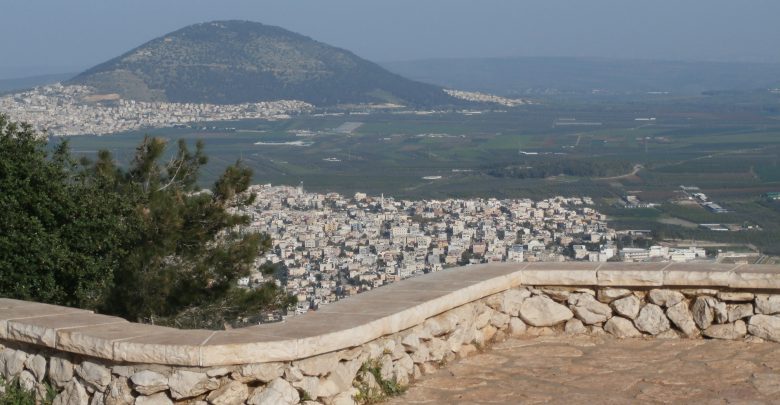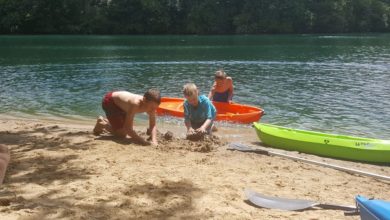Commentary: Truth and Tradition in Israel

Welcome back!
What a visit that we had last week to Mount Carmel, and the events of that great story between the prophet Elijah and the prophets of Ba’al.
Now we are back on the bus and headed north to our hotel on the Sea of Galilee, but first, we will make one last stop at Mount Precipice, outside of Nazareth. But before we can get off the bus
As we tour Israel we need to distinguish the difference between “historical sites”, those that have been verified by archaeological evidence, and “traditional sites”, those that the church has claimed for remembrance of significant Biblical events. This is an important distinction to make because in many instances when the Biblical narrative is read at any given location we can easily believe that “this must be the place” that an event happened. Not so.
There are times where it looks like the place, feels like the place, and the archaeological evidence has proven it is the place. But in many other cases, the site is near the location it happened and fits our idea of what that place could have been like. These are traditional sites. Most all of the traditional sites in Israel are preserved by the Catholic Church which places a high value on having a traditional site or place to visit when making a pilgrimage.
A great example of the difference between archaeology and tradition is in the Old City of Jerusalem when you have an opportunity to walk the Via Delarosa. For those unfamiliar with this Latin phrase, Via Delarosa means the “way of sorrow”. It is the path that Jesus walked carrying his cross from the place of His sentencing to Golgotha where he was crucified and died.
As you walk the 14 stations of the Via Delarosa, you wind through the narrow streets, small alleyways, and busy marketplaces. At one of the stations (or stops), guides will point to a rock jutting out of the wall that tradition says Jesus touched as He leaned against the wall while carrying the cross.
The archaeological problem with this claim is that due to being destruction of Jerusalem in 70 A.D. current city sits 25 feet higher than it did in Jesus’ day. Meaning that the streets that Jesus would have walked along from His sentencing to Golgotha are 25 feet lower than where we currently stand on today. That means either Jesus jumped really high to touch the infamous rock of the Via Delarosa, or it is a traditional site to serve as a reminder that Jesus did walk to Golgotha where He was crucified and died.
Hopefully, you can see how important it is important to make a clear distinction between historical sites and traditional sites. Which is why as we visit various locations together I will point out what is a historic site, verified by the archaeology and what is a traditional site, there to help us remember an event.
Now off the bus and onto the Mount of Precipice, just south of Nazareth in the cliffs of Mt Kedumim. This site is most often visited because of its significance as the place where the events of Luke 4:14-30 took place.
The Bible says that after Jesus’ temptation in the Judean wilderness, “Jesus returned in the power of the Spirit to Galilee and news of Him went out through all the surrounding region. And He taught in their synagogues, being praised by all.” (Luke 4:14-15) And He came to Nazareth, His hometown, where He had been brought up, and He went into the synagogue on the Sabbath, where He stood up and read the scroll from the book of the prophet Isaiah.
“The Spirit of the Lord is upon Me, because He has anointed Me to preach the gospel to the poor; He has sent Me to heal the brokenhearted, to proclaim liberty to the captives and recovery of sight to the blind, to set at liberty those who are oppressed; to proclaim the acceptable year of the Lord.” (Isaiah 61:1) Then Jesus dramatically rolled the scroll back, gave it back to the attendant and sat down. And the eyes of all who were in the synagogue were fixed on Him. And He said to them, “Today this Scripture (meaning the words of the prophet Isaiah) is fulfilled in your hearing.”
In saying this Jesus is making the claim that He indeed is the one that Isaiah was writing about.
“So all those in the synagogue, when they heard these things, were filled with anger and a great crowd rose up and carried Jesus to the brow of the hill on which their city was built so that they might throw Him down over the cliff.” (Luke 4:29)
When you read this, on location, looking out over the dramatic 1,000-foot cliff of Mount Precipice, it is so easy for us to think, this has to be the place those events happened. But they aren’t, and here are four reasons why:
First, according to the Bible itself, Nazareth was built on the hill they attempted to throw Jesus off of. Today, Nazareth is a much larger than it was 2,000 years ago, and even now the suburbs of have yet to reach Mount Precipice.
Second, there are many cliffs in and around ancient Nazareth that have over 50-foot drops. Any one of these would have served the purposes of the people attempting to kill Jesus.
Third, during the time of Luke 4, Israel was under the Roman occupation. Under Roman law, the only executions allowed were those carried out only by Roman officials. The historic site for the synagogue Jesus taught in is located 2 kilometers from Mount Precipice. This would have been much too far for the large angry crowd to travel carrying Jesus without alerting the Roman garrison stationed in Nazareth.
Lastly, according to Jewish law, the leaders of the synagogue would most likely have been older men who would have had great difficulty making the trip the 2-kilometer trek from the synagogue to the top of Mount Precipice.
So Mount Precipice is a traditional site rather than a historic site, where we are reminded of Jesus’ bold proclamation as He read in the synagogue. And even though this isn’t the exact place, the truth of Jesus statement still remains true today, that “Today the Word of God has been fulfilled in your hearing”.
Mount Precipice also offers us a view of the full expanse of the Jezreel Valley. In the distance, to the south, you see Mount Carmel and the hills of Jerusalem, and to the north, Mount Tabor, and the Galilee region. The is view is truly breathtaking at sunset which is why we intentionally choose to end our first day here.
Now, back onto the bus, and we will head to the Sea of Galilee and our hotel for the night. As we say at the conclusion of every adventure in the land: Till next time…In Israel!



